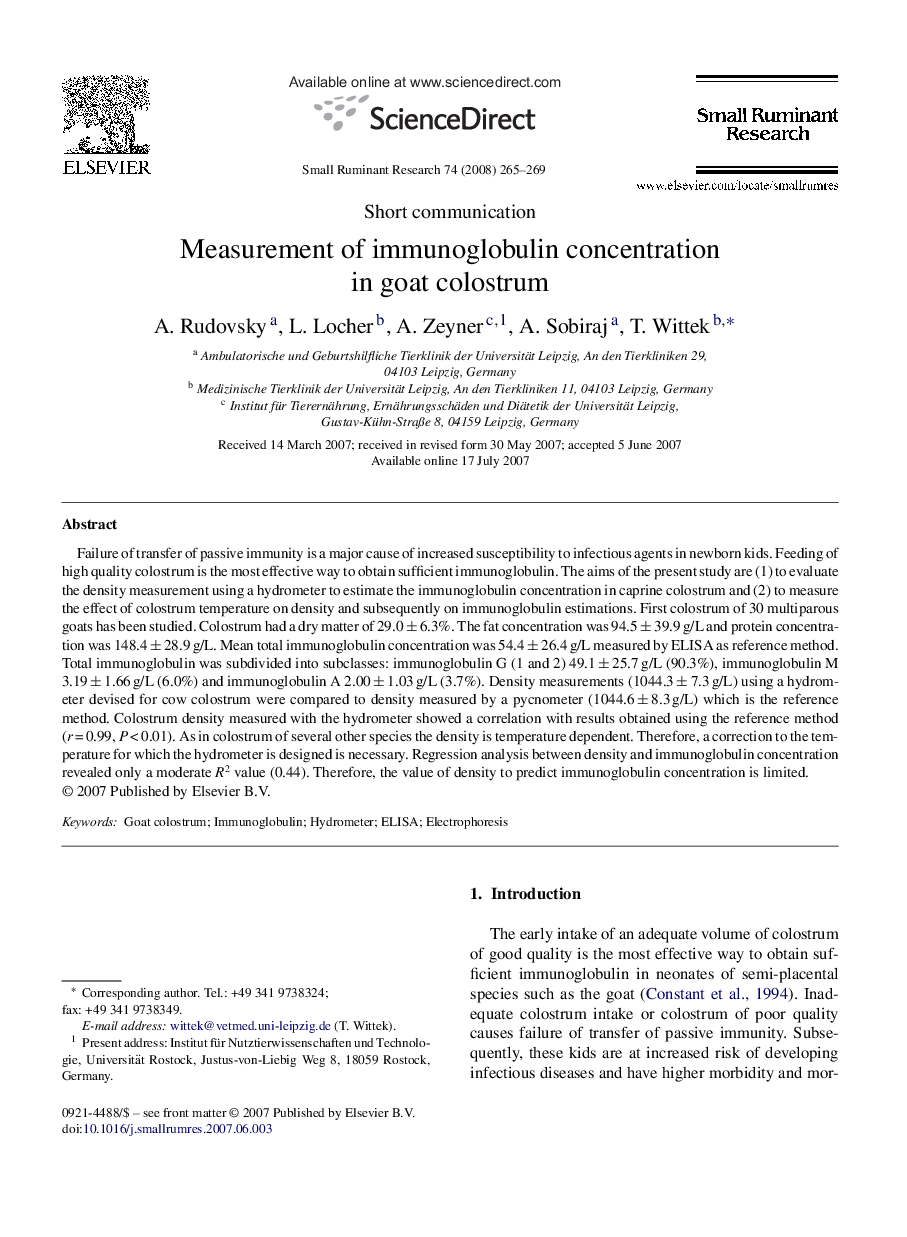| کد مقاله | کد نشریه | سال انتشار | مقاله انگلیسی | نسخه تمام متن |
|---|---|---|---|---|
| 2457978 | 1554418 | 2008 | 5 صفحه PDF | دانلود رایگان |

Failure of transfer of passive immunity is a major cause of increased susceptibility to infectious agents in newborn kids. Feeding of high quality colostrum is the most effective way to obtain sufficient immunoglobulin. The aims of the present study are (1) to evaluate the density measurement using a hydrometer to estimate the immunoglobulin concentration in caprine colostrum and (2) to measure the effect of colostrum temperature on density and subsequently on immunoglobulin estimations. First colostrum of 30 multiparous goats has been studied. Colostrum had a dry matter of 29.0 ± 6.3%. The fat concentration was 94.5 ± 39.9 g/L and protein concentration was 148.4 ± 28.9 g/L. Mean total immunoglobulin concentration was 54.4 ± 26.4 g/L measured by ELISA as reference method. Total immunoglobulin was subdivided into subclasses: immunoglobulin G (1 and 2) 49.1 ± 25.7 g/L (90.3%), immunoglobulin M 3.19 ± 1.66 g/L (6.0%) and immunoglobulin A 2.00 ± 1.03 g/L (3.7%). Density measurements (1044.3 ± 7.3 g/L) using a hydrometer devised for cow colostrum were compared to density measured by a pycnometer (1044.6 ± 8.3 g/L) which is the reference method. Colostrum density measured with the hydrometer showed a correlation with results obtained using the reference method (r = 0.99, P < 0.01). As in colostrum of several other species the density is temperature dependent. Therefore, a correction to the temperature for which the hydrometer is designed is necessary. Regression analysis between density and immunoglobulin concentration revealed only a moderate R2 value (0.44). Therefore, the value of density to predict immunoglobulin concentration is limited.
Journal: Small Ruminant Research - Volume 74, Issues 1–3, January 2008, Pages 265–269